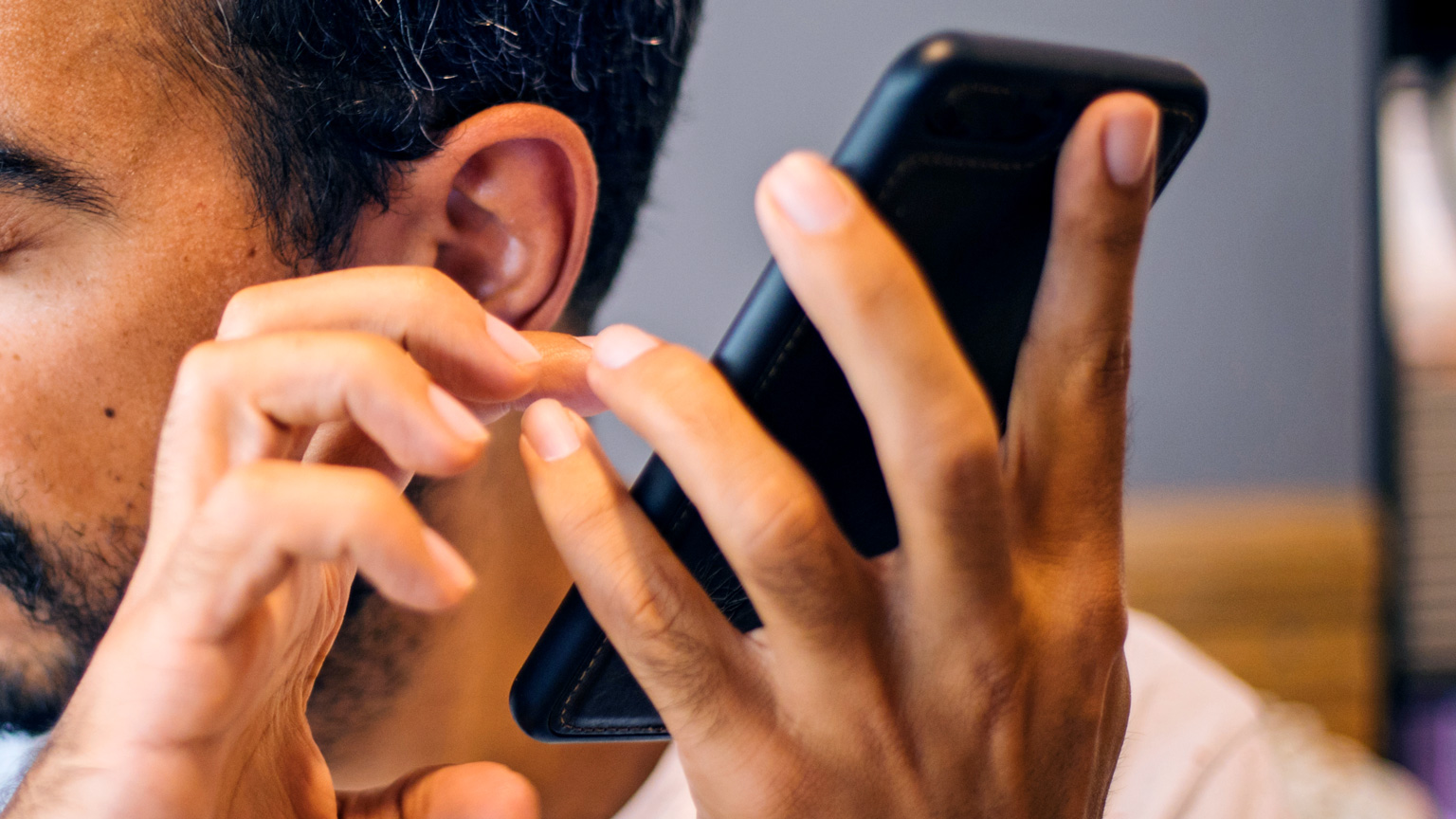Undoubtedly, digital channels have made everyday tasks, from depositing checks to buying tonight’s dinner ingredients, easier and more convenient for many people. But digitization has not always led to an optimal customer experience for everyone. The more than two billion people worldwide who are blind or low vision are often left behind.1
Our 2022 Global Digital Sentiment Survey found that consumers are interacting digitally with twice as many industries as they were before the COVID-19 pandemic. In collaboration with accessibility consultancy Tilting the Lens, we conducted qualitative user research in Germany, Italy, and the United States to understand the specific digital behaviors and experiences of those who are blind or have low vision (For more information about the terms used in this article, see sidebar “The language of vision disabilities,” and for details about our qualitative research, see sidebar “About the research” at the end of this article). Individuals we spoke with highlighted some helpful technological advances in recent years that have aided their digital experiences. For example, screen-reading software—the primary way most of our research participants engage with digital technologies—is available on most devices.2 They also pointed to accessibility improvements that some companies have made to their websites and digital content. Still, they often found digital content and services to be inaccessible.
The social case for improving the digital experiences of those with blindness or low vision is clear: improvements can provide them equal access to digital products and services and reinforce their independence. The business case also is compelling: companies can build loyal, valuable relationships with these consumers. It’s estimated that consumer companies with inaccessible websites and digital strategies lose $6.9 billion annually as frustrated disabled consumers take their business to competitors.3 We expect the cost to companies to increase by 2030 as demand for accessible products and services rises due to a rapidly aging global population.
In this article, we’ll share the digital experiences and feedback of our research participants to help organizations understand the unintended effects of traditional product design on trust and buying decisions. We’ll also provide some principles organizations can adopt to improve the customer experience for everyone.
Defining digital accessibility
Online consumer experiences—from ordering food to accessing a bank account to clothes shopping—are often heavily driven by two elements: visuals and the use of a mouse or a finger on a touch screen. Photos, videos, and subtle user experience cues (for instance, font sizes, color palettes, text boxes, and icons) not only enrich and enliven the experiences but also steer consumers through digital content and enable them to take action, such as requesting additional information or placing an order.
As a result, individuals with low vision may, for example, experience challenges interacting with web content when companies use low-contrast color combinations. Individuals who are blind must rely on assistive technologies, such as screen readers, to access this content. However, these technologies are only effective if companies include the elements on their websites and the underlying code that enables them to function properly. For example, if a website’s underlying code doesn’t explain that a button or hyperlink is clickable, consumers may miss important information or be unable to advance in a digital experience. As one participant in Germany explained, “It often happens that you try to look at a product for 30 minutes, working through the ordering process, and then you suddenly realize on the last button, you can’t do it. It’s a frustrating user experience.”
So what is digital accessibility? When we asked our research participants to share their definitions, they expressed the desire for a seamless experience when interfacing with online content. They said they’d like it to be delivered without barriers—meaning, for instance, that they can view and interact with it using whatever screen-reading technology or accessibility device they prefer. They said they shouldn’t have to implement work-arounds, such as asking friends or family members for help. Moreover, they would like the level of the experience to be comparable to that of those without disabilities. Their comments also suggest that separate accessible sites or accessibility site overlays often don’t suffice, because they can be inconsistent or simply ineffective.
Digital accessibility means freedom in every aspect of one’s daily life, from work to shopping to entertainment.
Participant in an Italian research group

What does it mean to create a fully accessible digital experience from a technical perspective? While there’s no universal definition of digital accessibility, there are plenty of reference sources. One notable resource: the Web Content Accessibility Guidelines (WCAG) developed by the Web Accessibility Initiative, which is part of the World Wide Web Consortium that works with members of disabled communities to set accessibility standards. It sets four main aspects of accessibility:4
- All information is perceivable.
- Interfaces are operable.
- Content is understandable.
- Capabilities are robust.
Most participants said they would like to see some level of governance for improving the accessibility of digital sites, whether globally or locally determined. But our discussions with those with lived experiences make clear that delivering digital accessibility requires more than that. Designers will need to find creative solutions and adopt new mindsets focused on providing everyone with equal access to applications and content.
How accessibility impacts digital trust and buying decisions
Blind internet users abandon approximately two-thirds of their e-commerce interactions because of inaccessibility, forcing them to seek out more accessible options elsewhere.5 Ultimately, disabled consumers turn to companies they trust to deliver hassle-free digital interactions. This is in line with the result of our recent survey on digital trust. In general, consumers rank digital-trust tenets as nearly as important as cost and delivery time in buying decisions and indicate that they take their business elsewhere when trust is violated.
The frustration alongside the waste of time [of inaccessibility] is really big, and that’s why trust in companies where you know that the risk is lower of that happening is obviously the focus.
Participant in German discussion group

Yet our research suggests that the impact on brands is likely far higher. Blind internet users are not just abandoning transactions. Inaccessibility drives them to avoid market segments and companies altogether. Many research participants ranked their digital engagement low in industries where consumers more broadly have ranked it high, such as in telecom, utilities, and insurance.
Moreover, participants' responses when asked about 12 industries6 suggest that all can, and must, do better if they are to build digital trust with disabled communities. Consider the banking industry, which ranked highest in digital engagement among research participants in all three geographies. Ninety percent of participants in Germany and the United States and all participants in Italy said they had engaged with digital banking within the past six months. Many of the participants praised mobile-banking apps for being simple and easy to navigate by, for example, offering assistive technology that accurately reads content on the screen aloud to the user or by enabling the user to enlarge content. Still, about half ranked the overall digital experiences in the industry as either “usable but difficult” or “accessible with many problems.”
So how can leaders improve the accessibility of their digital products and services in a way that creates better customer experiences and, in turn, builds digital trust? Feedback from our research participants suggests that the answer lies in not focusing on accessibility per se but on improving customer experience for those with disabilities.
Activating accessibility through inclusive design
In our work, we find that cohesive user experiences, collaborative design practices, and continuous improvement are the bedrock of good design. Our research participants also highlighted such practices as critical to understanding and delivering on their communities’ needs. In other words, good design and inclusive design are inextricably linked.
The greatest barrier to accessibility is that developers build websites and/or apps that are visually beautiful but inaccessible; the two should and can coexist.
US research participant

Taking this proactive and customer-oriented approach up front can be more cost-effective than addressing accessibility issues after the fact. Barclays, for instance, found that redesigning its mobile app with accessibility in mind cost one-tenth of the amount spent fixing accessibility challenges in its existing mobile app.7
Additionally, accessible design can create more effective and intuitive experiences all around. Following the launch of its more accessible mobile app, Barclays found that the app’s ratings more than doubled.
Ensuring cohesive customer experiences
In recent years, as companies sought to elevate the customer experience, they shifted their focus from individual touchpoints to the customer’s end-to-end journey. They created personas and digital diaries to help them better understand each customer and mapped out all the interactions that might occur. Such efforts are equally critical for attracting and retaining consumers with disabilities. Including personas for individuals with different lived experiences can help digital-product developers and designers ensure they factor accessibility into the customer experience from the outset.
Later, when a product team has a minimum viable product of its new digital product or service, it can implement accessibility testing to surface potential areas of friction that consumers may face. These assessments should include both end-user testing by those with lived experiences and code testing, which leverages automated software tools designed to look for potential WCAG errors. Third-party services and even partnerships with researchers may also support this work. Unilever, for example, partnered with Cambridge University to assess how easy it is to glean product information, such as size or flavor, from the product image displayed on mobile devices and tablets. The tool kit developed from this work helps web designers evaluate the visual clarity of images and take action early to make it easy for low-vision users to identify the exact product they are looking for online. Unilever found this work had a direct link to increased sales for one of its global brands: in one A/B test, use of mobile hero images that helped consumers more quickly and clearly understand the offering led to a 24 percent increase in product sales.8
It’s crucial that, even in testing, companies map out and follow a customer’s potential journey within, across, and outside digital channels to ensure a consistent and quality customer experience. Some points to consider include the following:
- Are customer experiences across both mobile apps and websites accessible? One research participant in Germany shared how his experience with two banks he uses depends on the channel he chooses: he finds that one institution’s website is accessible, but its mobile app remains difficult to use, while the other institution’s mobile app is usable (with some issues), but its website is difficult to navigate with screen-reading software.
-
If an individual contacts customer service for help with a digital accessibility issue, do customer service staff have the resources to resolve the situation? A research participant in Italy found that when calling customer service centers for help, representatives frequently didn’t have clear escalation paths for accessibility challenges, so issues went unresolved.
Another participant in Italy shared the experience of receiving the wrong food from an online delivery service because the alt text incorrectly identified a sausage roll as a hamburger. When the individual contacted the food delivery service, the company refused to rectify the situation. Their system aligned to the on-screen text, so they stated that the individual received what they ordered.
Embracing codesign and collaboration
Placing customers at the heart of product and service development has long been a foundational tenet of design thinking. But the experiences of our research participants suggest that persons with lived experiences often aren’t included in the design and development of the digital products and services they use. As one participant in Germany said, “If it is meant to be used by us, it should be influenced by us.”
Nearly a decade ago, the Dutch multinational banking group ING demonstrated what’s possible when disabled individuals have a seat at the table. Under the guidance of the company’s then-chief information officer, who is visually impaired, ING became the first in its industry to integrate voice assistance into its mobile app and ATMs. Its voice assistance feature was later acquired by the company that now operates all large banks’ ATMs in the Netherlands.
As teams build new digital products and services, ensuring that those with lived experiences are equal collaborators in the process—serving as designers, developers, and advisers—can help organizations deliver a top-notch customer experience. Consider the efforts of the Space Telescope Science Institute (STScI) to make the breathtaking images captured by the James Webb Space Telescope accessible to everyone. Codesign efforts revealed that STScI needed to add more detail to image descriptions to bring them to life. This led the team to expand its systems to support descriptions of nearly 1,000 characters (up from 125) so they could describe, for instance, the relative position, shape, and coloring of one galaxy to another.9
Building a culture of continuous improvement
Platforms change, and website content is updated. Channels evolve, and new ways to access digital content emerge. Such activity can make a once-accessible digital experience suddenly inaccessible. As one research participant in Germany described it: “Accessibility is a sandcastle we have to keep constantly rebuilding, or the ocean wipes it away.”
Creating a culture of continuous improvement can build the muscle in developers and designers to automatically check for any changes to accessibility when updates are released. While accessibility teams can provide valuable guidance and support in these efforts, the high frequency of digital updates requires organizations to upskill those who directly work on the products regularly.
Upskilling efforts can enable developers and designers to understand the importance of accessibility and best practices for achieving it. Using vision simulation tools in training and development can give developers and designers a sense of what their design might look like to someone with low vision or color blindness. Hiring disabled developers and designers can help embed inclusive design and culture in the company’s foundation.
Additionally, identifying key performance indicators related to accessibility can help ensure consistency and continuity of accessibility in digital products and services over time.
In cases where the development of new digital capabilities is outsourced, organizations can provide guidance to increase the likelihood of inclusive experiences. Microsoft, for example, developed a tool kit for suppliers (including designers, content creators, developers, engineers, and event managers) that includes videos, how-to guides, and other content to support its expectations. Since the original release of its supplier tool kit, the company has expanded the content and published the material externally for all to benefit.10
The power of digital has been profound. For many, it has made everyday tasks easier and provided access to education, goods and services, and job opportunities previously unavailable to them. But as our research participants shared, more work must be done to enable those with visual disabilities to more fully engage in our increasingly digital world. Not only is it the right thing to do, but it can also allow those companies prioritizing digital accessibility to realize significant economic benefits as they deepen customer trust and expand their customer base. This research doesn’t provide all the answers. But it’s clear that the foundations of good design—cohesive development, collaborative design, and continuous improvement—are also the keystone of accessible design.


